Category: Economics
-
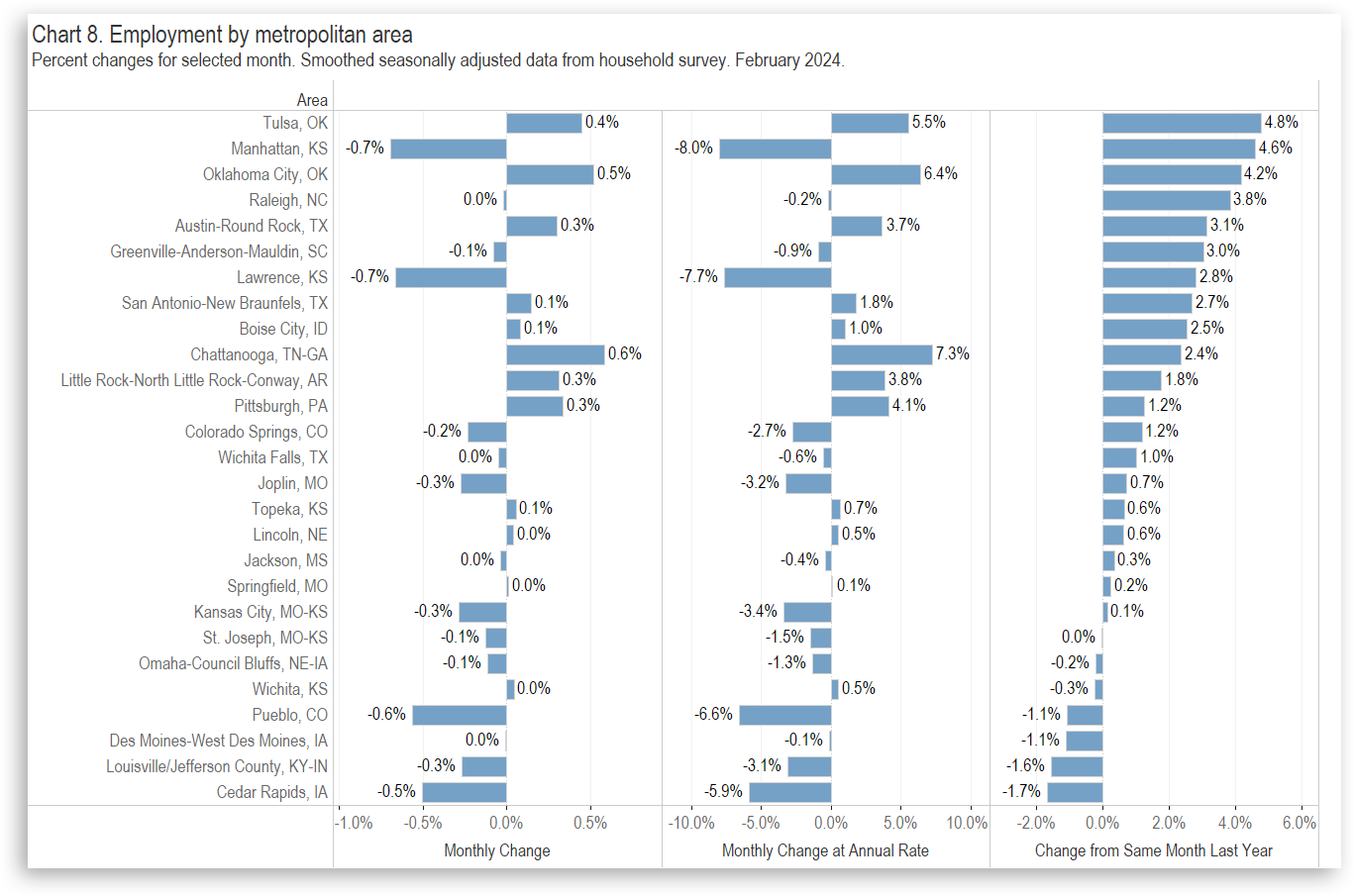
Wichita Employment Situation, February 2024
For the Wichita metropolitan area in February 2024, most employment indicators changed only slightly from the prior month, and the unemployment rate did not change. Wichita continues to perform poorly compared to its peers.
-
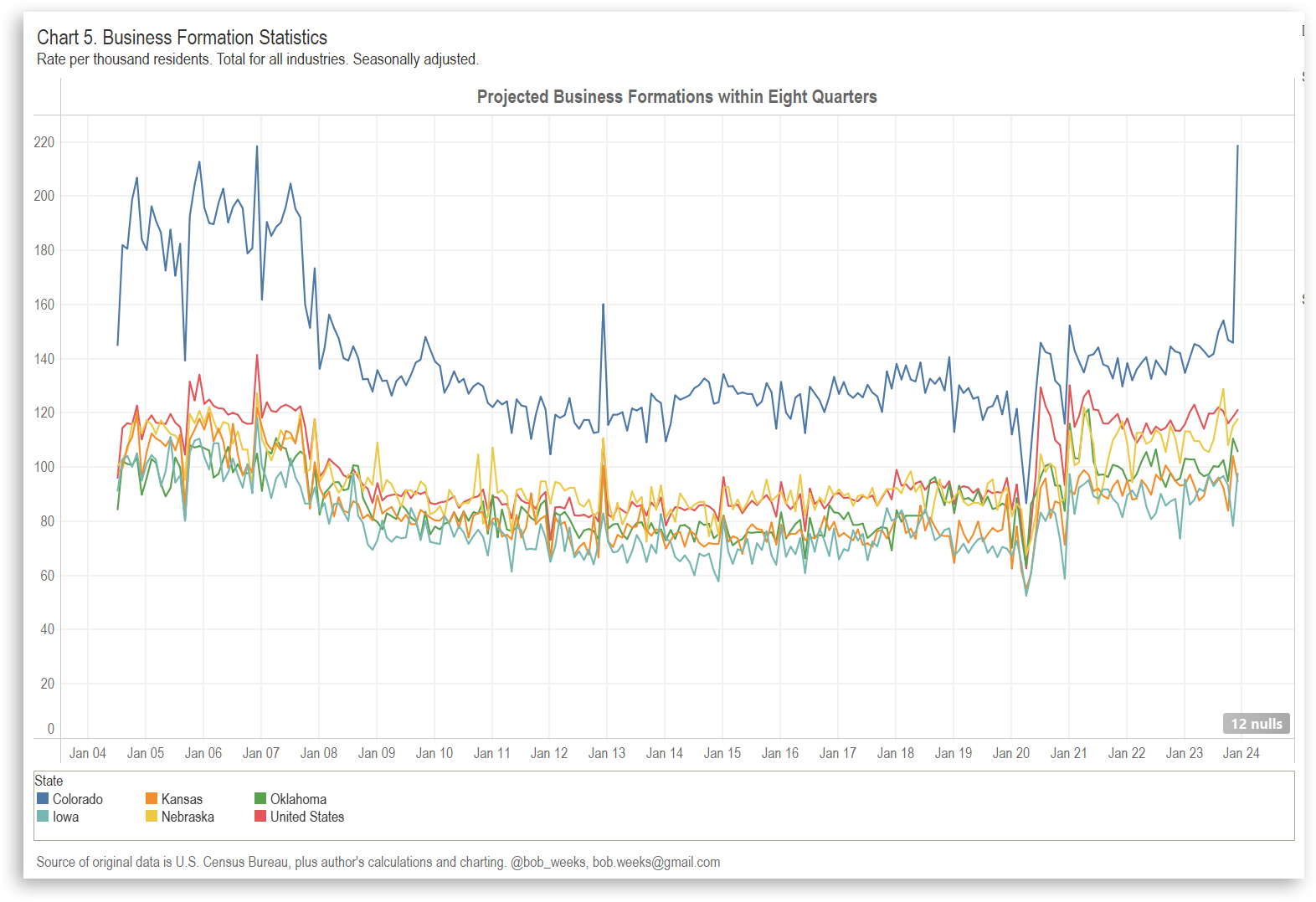
Business Formation in States
For both business applications and business formations, Kansas does better than some states, but lags many states and the nation.
-
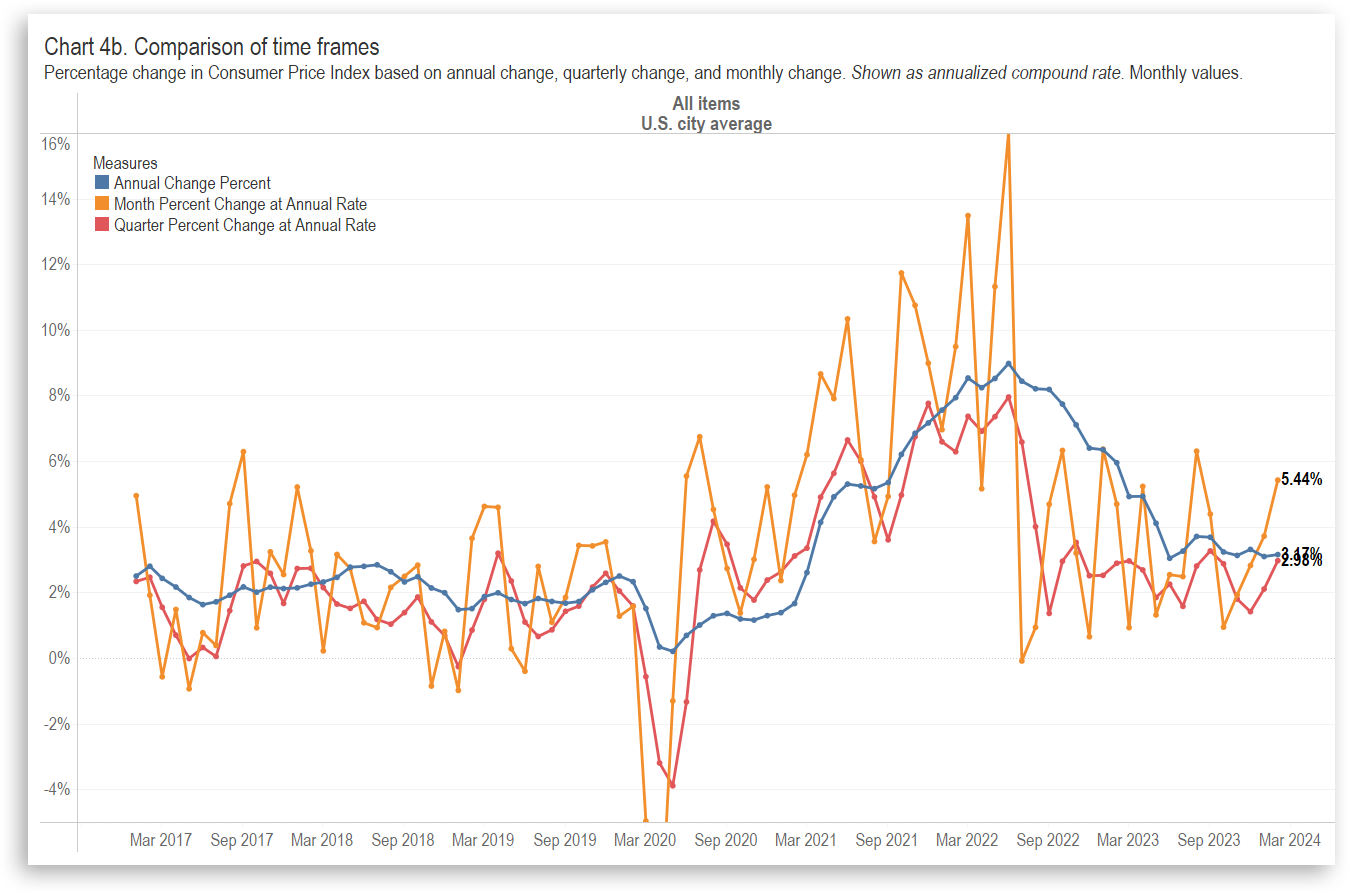
Consumer Price Index, February 2024
Looking at inflation calculations in a different way.
-
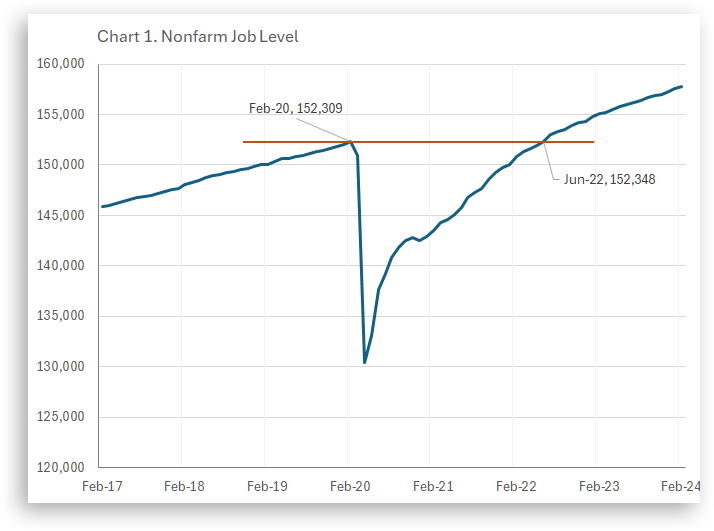
Employment, pre- and post-Covid
Comparing job growth before and after the Covid pandemic, attempting to remove the effect of the pandemic.
-
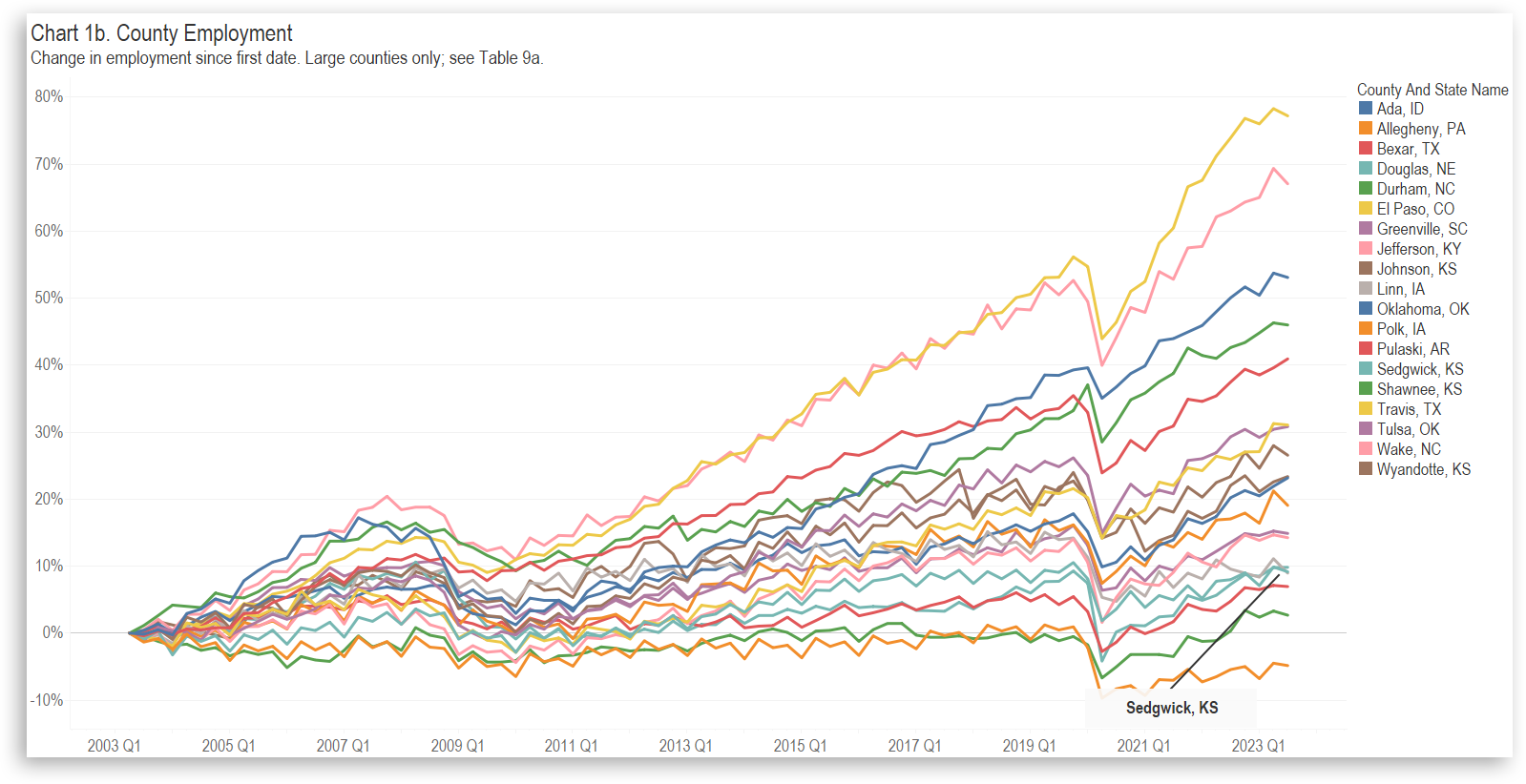
Large County Employment, Third Quarter 2023
Employment in large counties, including Sedgwick County and others of interest.
-

National Employment Situation, January 2024
Total nonfarm payroll employment increased by 353,000 in January 2024 from December 2023. The unemployment rate was unchanged at 3.7 percent.
-
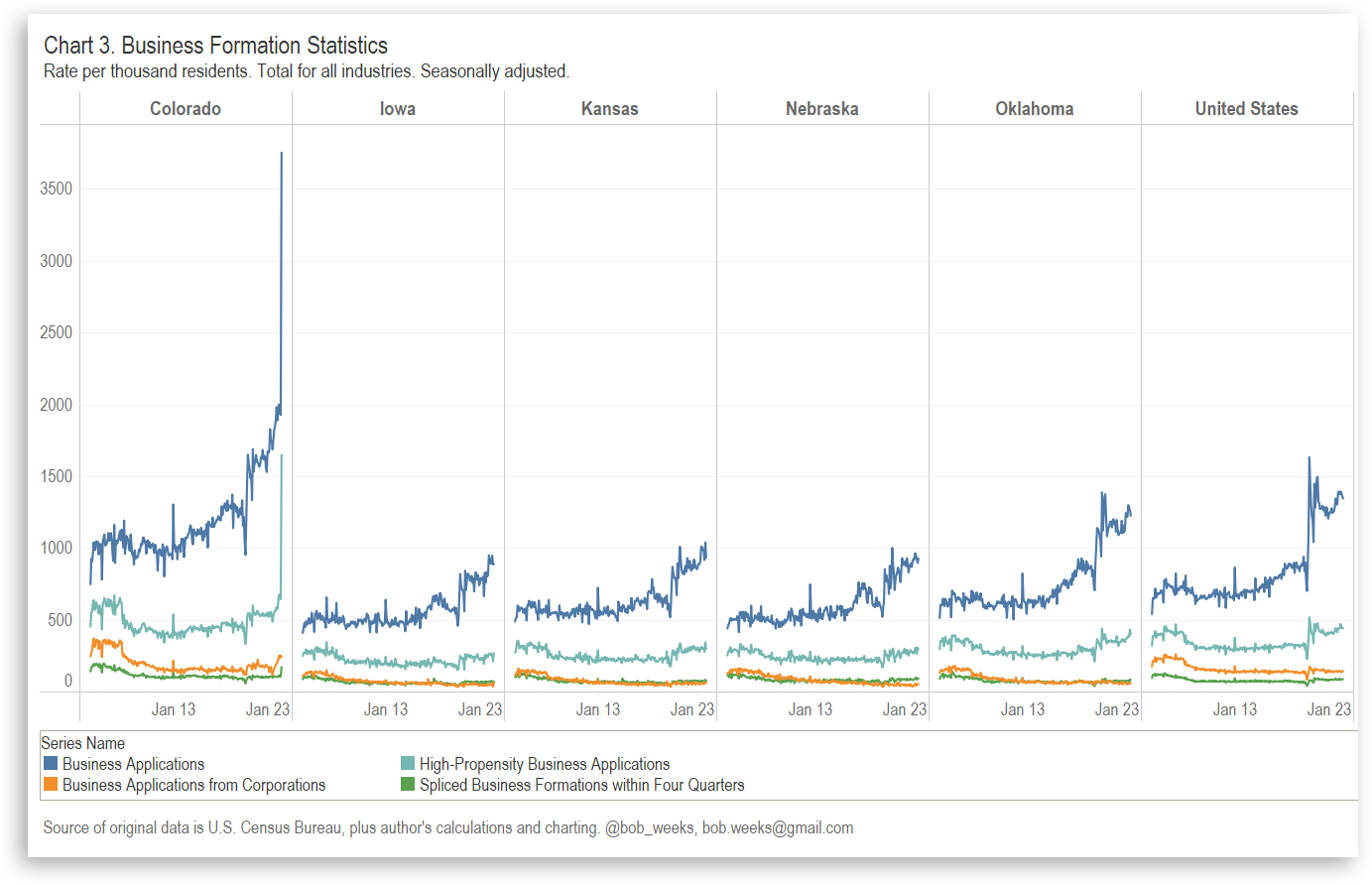
Business Formation in States
For both business applications and business formations, Kansas does better than some states, but lags many states and the nation.
-
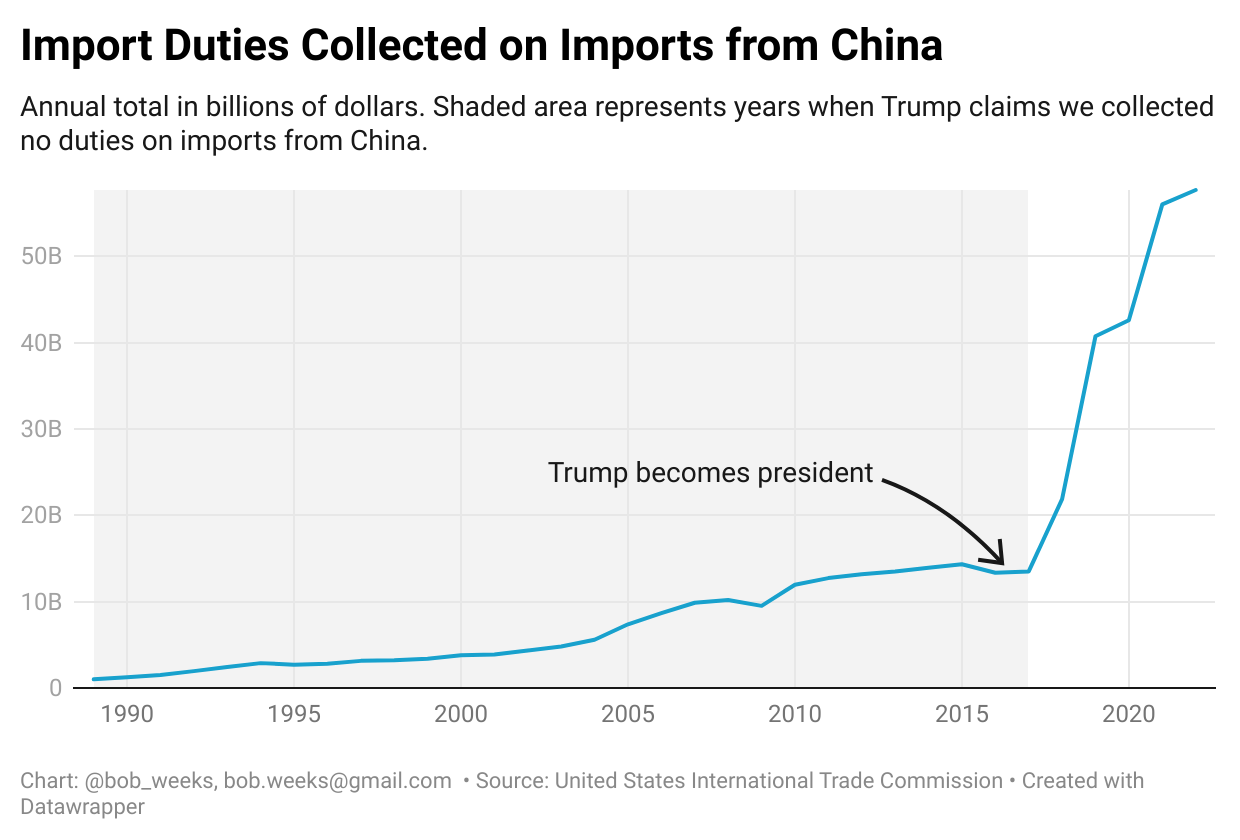
Trump’s Tariffs
On the campaign trail, former president Donald J. Trump praises his import taxes on Chinese imports. But he is wrong on the data, and wrong on the economic effects.
-
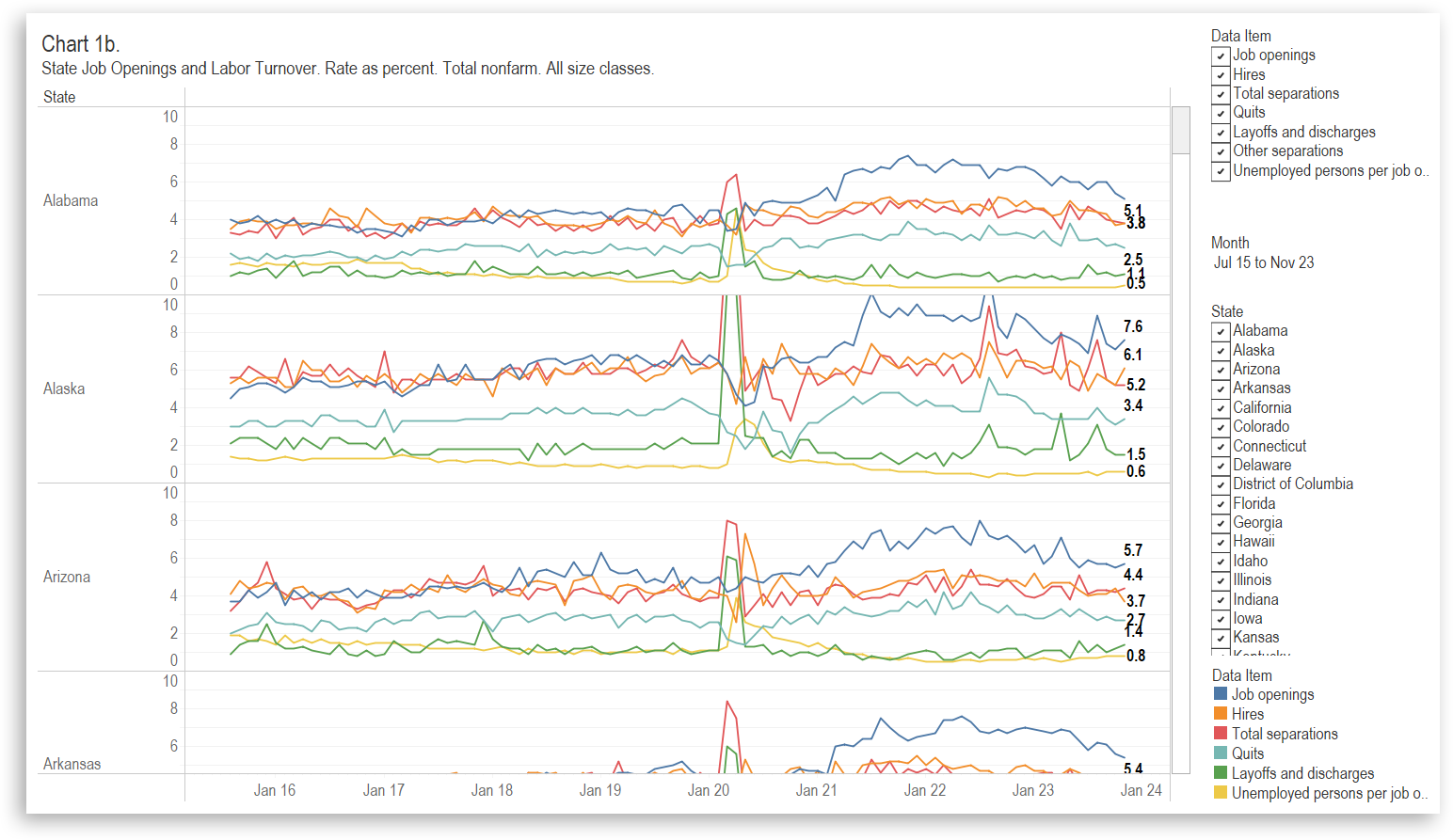
State Job Openings and Labor Turnover
Data on monthly job turnover in the states and presented in an interactive visualization.